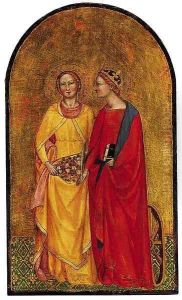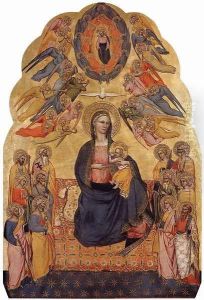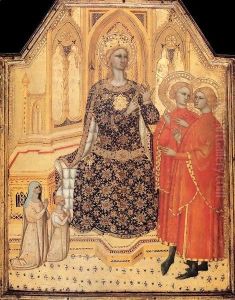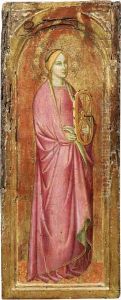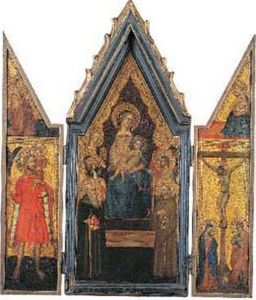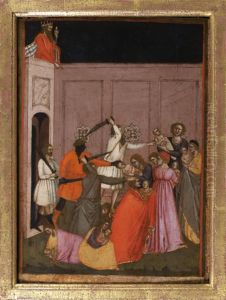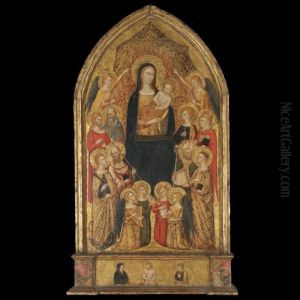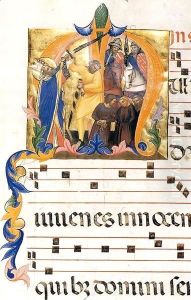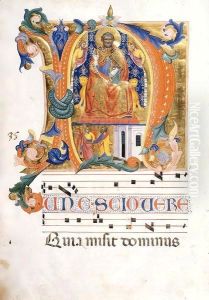Cenni Di Francesco Di Ser Cenni Paintings
Cenni di Francesco di Ser Cenni, an Italian painter from the early Renaissance period, remains a somewhat obscure figure in art history, partly due to the limited documentation of his life and works. Born around 1369, possibly in Florence, he was active during a time when the Gothic style was giving way to the innovative approaches of the Renaissance. Cenni di Francesco's career unfolded amidst the backdrop of a flourishing artistic environment, where experimentation with perspective, human anatomy, and narrative detail was beginning to take hold.
His works are often characterized by their devotion to religious themes, a common focus among artists of his time, reflecting the deep intertwining of art and spirituality in the late Middle Ages and early Renaissance. Though specific details of his training are unknown, it's likely that he was part of the vibrant Florentine art scene, which was home to many workshops and guilds that fostered the talents of young artists. Cenni di Francesco's style suggests that he was influenced by the Sienese school, known for its graceful lines and rich coloration, as well as by the emerging Florentine emphasis on lifelike representation and spatial depth.
One of his notable works is the 'Madonna and Child with Saints', a testament to his ability to blend traditional religious iconography with the emerging realism that would define Renaissance art. His use of color and light, along with the detailed expressions and postures of his figures, demonstrate his contributions to the evolution of Italian painting.
Despite his talents, Cenni di Francesco di Ser Cenni has not received the same level of recognition as his contemporaries, like Giotto or Cimabue, largely because many of his works have been lost or were attributed to other artists over the centuries. However, the surviving pieces and references in contemporary documents suggest that he played a significant role in the transitional period of Italian art, bridging the gap between the medieval and Renaissance styles.
Cenni di Francesco di Ser Cenni's death around 1415 marked the end of a career that, while not as well-documented as some of his peers, contributed to the rich tapestry of early Renaissance art. His work remains of interest to historians and art enthusiasts who seek to understand the nuanced development of artistic expression during one of Europe's most transformative periods.
